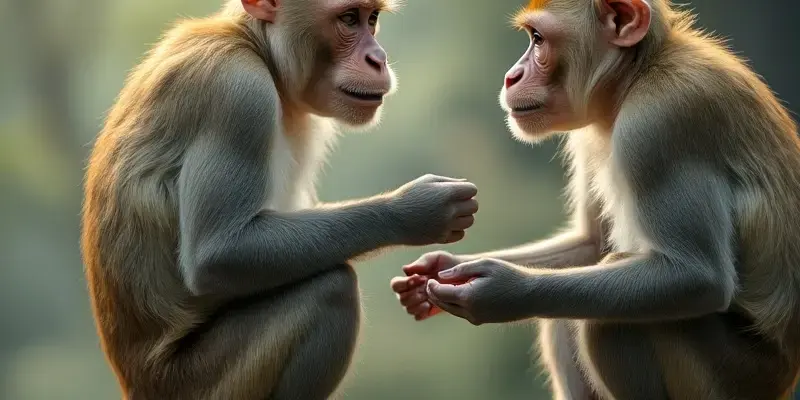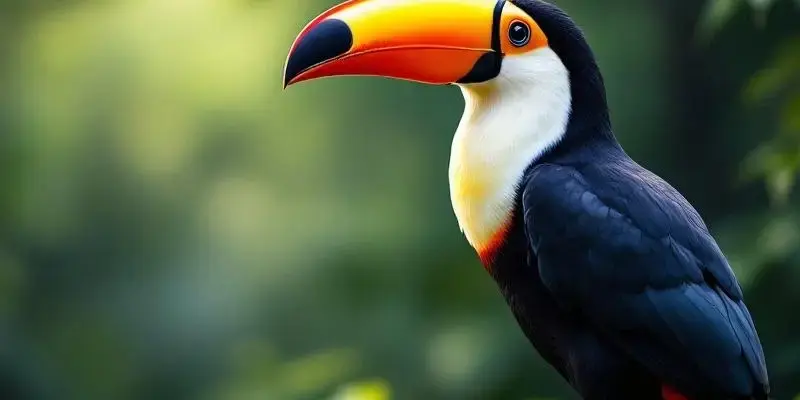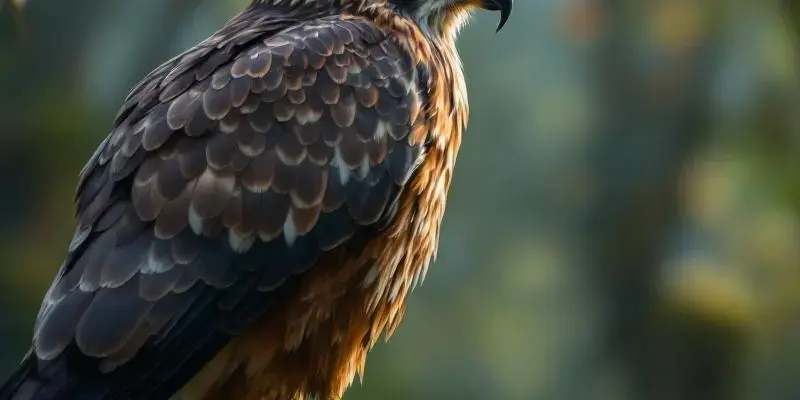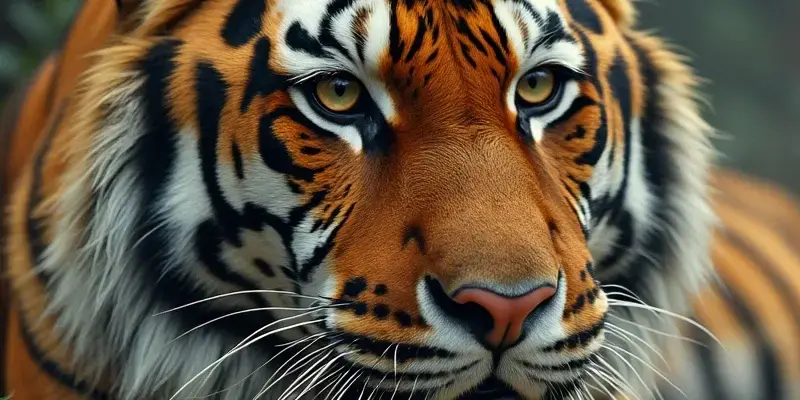Monkey spiritual meaning

Monkeys hold profound spiritual significance across numerous world civilizations, representing everything from divine messengers to trickster figures embodying human folly. Their symbolism transcends cultural boundaries, with universal traits of intelligence, adaptability, and playfulness making them powerful spiritual intermediaries that bridge the mundane and sacred realms.
Key Takeaways
- Monkeys symbolize divine intelligence and transformation in Eastern traditions through figures like Sun Wukong and Hanuman
- In Japanese belief, monkeys serve as protective guardians against spiritual threats and demons
- Mesoamerican cultures revered monkeys as artistic creators and important celestial figures
- African traditions position monkeys as wisdom keepers and judges of human behavior
- As spirit animals, monkeys encourage balancing playfulness with discipline in spiritual practice
The Monkey as a Sacred Symbol Across Civilizations
The spiritual significance of monkeys spans diverse ancient traditions around the world, creating a rich tapestry of meaning that has endured for millennia. Eastern traditions revere monkeys as divine servants and enlightened beings, while Mesoamerican cultures celebrate them as creators and artistic patrons. African spiritual systems position monkeys as judges and guardians of equilibrium, and Buddhist traditions use monkey symbolism to reflect on human nature.
Despite cultural differences, certain universal attributes emerge across traditions. Monkeys typically represent intelligence, adaptability, communication skills, and social bonds. Their position as creatures that resemble humans while remaining distinct makes them perfect symbols for exploring the boundaries between animal instinct and higher consciousness. This symbolic duality allows monkeys to serve as spiritual intermediaries in many traditions.
The monkey’s playful yet complex nature creates a spiritual symbol that resonates with fundamental human experiences. From divine messenger to trickster figure, monkeys embody spiritual lessons about transformation, mischief, loyalty, and the human spiritual journey.
The Monkey King and Divine Servants: Eastern Spiritual Traditions
In Chinese literature, few figures match the spiritual complexity of Sun Wukong, the Monkey King from “Journey to the West.” This legendary figure possesses remarkable powers, including the ability to transform into 72 different forms and leap great distances. More than just a colorful character, Sun Wukong represents the spiritual journey toward enlightenment, complete with trials, transformation, and ultimate transcendence of ego.
Hindu traditions offer equally profound monkey symbolism through Hanuman, the monkey deity who exemplifies unwavering devotion. As Rama’s faithful servant, Hanuman demonstrates superhuman strength, perfect loyalty, and selfless service—qualities that make him one of Hinduism’s most beloved figures. His ability to expand or contract his form at will symbolizes the spiritual capacity to adapt to any circumstance while maintaining devotional focus.
Japanese spiritual tradition contributes the iconic teaching of the Three Wise Monkeys: “see no evil, hear no evil, speak no evil.” This principle has transcended its origins to become a globally recognized ethical concept. The monkeys—Mizaru, Kikazaru, and Iwazaru—embody the importance of guarding one’s senses and speech from negativity, highlighting the monkey’s role as a spiritual guide for human conduct.
The Chinese zodiac further elaborates on monkey symbolism, characterizing those born in the Year of the Monkey as intelligent, inventive, and socially adept. These attributes reflect the spiritual qualities of the monkey as a clever problem-solver and community builder, suggesting that monkey energy can help individuals navigate complex social and intellectual challenges.
Guardians of the Spiritual Gateway: Japanese Protection Symbolism
Japanese spiritual traditions have developed a unique protective association with monkeys based on linguistic connections. The word “saru” (monkey) sounds similar to the word for “expel” or “leave,” creating powerful apotropaic (evil-averting) symbolism. This wordplay forms the foundation for monkeys serving as guardians against malevolent spiritual forces in Japanese folk religion.
The northeast direction, known as “Kimon” or the “demon gate,” holds special significance in traditional Japanese protective practices. Monkeys, particularly those named MASARU (meaning “victory”), are strategically placed as spiritual sentinels guarding this vulnerable directional gateway. Homes, temples, and sacred sites often feature monkey statues or images specifically oriented toward the northeast to prevent harmful influences from entering.
At Hie Jinja shrines throughout Japan, monkey worship focuses on several key blessings:
- Fertility and safe childbirth
- Harmonious marriage and family relationships
- Protection from illness and misfortune
- Success in business endeavors
Within Shinto tradition, monkeys occupy a liminal spiritual position between the human and divine realms. As creatures that resemble humans but retain their wild nature, they naturally serve as messengers and intermediaries between worlds. This intermediate status makes them particularly effective spiritual guardians, capable of understanding both human concerns and divine principles.
Creators and Artists: Monkey Symbolism in Mesoamerican Cultures
Maya creation mythology features profound connections to monkeys, particularly in their sacred text, the Popol Vuh. According to these ancient stories, the first attempt at human creation resulted in beings who lacked proper respect for the gods—these flawed creations were transformed into Howler and Spider Monkeys. This origin tale positions monkeys as proto-humans, creatures that share our appearance but lack the spiritual connection that defines true humanity.
The Aztec calendar incorporated monkey symbolism through the day sign “ozomatli” (monkey), associating it with artistic expression and joyful energy. This sign connected to Xochipilli, the deity of art, games, beauty, and flowers. Individuals born under this sign were believed to possess natural artistic talents and a playful approach to life that could either manifest as creativity or potentially troublesome mischief.
For Maya artists, monkeys held special significance as patrons of the arts. Sculptors and scribes in particular looked to monkey energy for creative inspiration, believing that these animals possessed divine knowledge of artistic techniques. The dexterity and curiosity of monkeys made them perfect symbols for the artistic process, combining technical skill with innovative exploration.
The ancient reverence for monkeys continues in modern Mexican and Guatemalan community celebrations. Traditional dances featuring monkey characters preserve elements of pre-Columbian spiritual beliefs, blending them with post-conquest traditions. These performances maintain the monkey’s sacred association with creativity, playfulness, and the balance between human civilization and the natural world.
Judges and Equilibrium Keepers: African and Egyptian Traditions
In Baule tradition from West Africa, the monkey guardian Ghekre serves as a spiritual judge of human souls. This powerful entity evaluates human conduct against moral standards, determining appropriate spiritual consequences. Ghekre combines the intelligence attributed to monkeys with divine authority, creating a figure that understands human weaknesses while maintaining higher spiritual standards.
Egyptian spiritual systems incorporated monkey deities in their complex afterlife theology. A’ani, a baboon deity, assisted in the weighing of souls on Ma’at’s scales of justice. The baboon’s acute observational skills and intelligence made it an appropriate assistant in this crucial judgment process, helping to determine if the deceased had lived according to divine principles.
African folktales frequently feature monkeys as protagonists demonstrating exceptional wisdom and cleverness. These stories serve educational purposes, teaching values like:
- The importance of quick thinking in difficult situations
- How intelligence can overcome physical limitations
- The value of social cooperation and community bonds
- Consequences of deception or excessive pride
The Dogon people incorporate monkey symbolism into ceremonial masks and ritual dances that connect participants to ancestral wisdom. These sacred practices use monkey imagery to represent the balance between natural instinct and spiritual awareness, helping community members understand their place within both the natural order and spiritual hierarchy.
Mirrors of Human Nature: Buddhist Monkey Symbolism
Buddhist Jataka tales feature monkeys in pivotal spiritual roles, often as Bodhisatta figures representing Buddha in previous incarnations. These stories use monkey characters to illustrate Buddhist principles and the development of virtues across multiple lifetimes. Through these monkey embodiments, Buddha demonstrates compassion, wisdom, and self-sacrifice in accessible narratives that appeal to both children and adults.
Buddhist interpretations of monkey symbolism differ notably from Hindu traditions. While Hinduism often venerates monkey figures like Hanuman as divine servants, Buddhism typically uses monkeys to reflect human flaws and spiritual challenges. This contrast highlights how the same animal can carry dramatically different symbolic meanings depending on the spiritual framework interpreting it.
Monkey parables in Buddhist teaching often illustrate the dangers of unchecked impulses. Stories feature monkeys whose discontent, extravagance, or hypocrisy lead to negative consequences, providing clear spiritual lessons about mindfulness and moderation. The monkey mind—restless and easily distracted—serves as a powerful metaphor for the undisciplined human consciousness that meditation seeks to calm.
Through monkey symbolism, Buddhist teachings examine the relationship between intention and outcome in spiritual practice. Monkeys may act with good intentions but create unfortunate results through impulsive behavior, demonstrating how even positive spiritual motivation must be guided by wisdom and foresight to produce beneficial effects.
Modern Spiritual Connections: The Monkey as Spirit Animal
Contemporary spiritual practices often incorporate monkey as a personal spirit guide or power animal. Those who connect with monkey energy typically experience heightened creativity, social intelligence, and adaptability in challenging situations. The monkey spirit animal brings lessons about maintaining joy even during difficult times, using humor as a spiritual coping mechanism.
Working with monkey spirit energy requires finding the balance between creative playfulness and disciplined wisdom. Without this balance, monkey energy can manifest as scattered attention or chaotic behavior. Spiritual practices that involve monkey symbolism often focus on channeling this dynamic energy constructively, using the monkey’s natural curiosity to explore new spiritual territories while maintaining sufficient focus.
Embracing the spontaneity of monkey energy can transform spiritual practice by introducing unexpected perspectives and solutions. Rather than following rigid spiritual formulas, those connected to monkey energy often discover innovative approaches to meditation, prayer, and spiritual service. This element of surprise helps prevent spiritual practice from becoming stale or mechanical.
Our genetic similarity to monkeys—particularly to species like chimpanzees and bonobos—makes them particularly powerful metaphors for understanding human behavior through a spiritual lens. By observing the balance monkeys maintain between individual expression and community participation, spiritual seekers gain insights into their own social and spiritual development.
The Enduring Spiritual Legacy of Monkey Symbolism
The universality of monkey symbolism across cultures reveals fundamental spiritual truths that transcend geographical and historical boundaries. While specific interpretations vary between traditions, core elements like intelligence, adaptability, and misch
The article explores the profound spiritual significance of monkeys across various world cultures. These animals serve as powerful symbols in religious and spiritual traditions, representing divine intelligence, transformation, protection, and creativity. Monkeys are viewed as spiritual intermediaries that bridge the mundane and sacred worlds due to their human-like qualities combined with animal nature.
Eastern traditions revere figures like Sun Wukong and Hanuman as divine servants with supernatural abilities. Japanese culture sees monkeys as protective guardians against spiritual threats. Mesoamerican civilizations celebrated monkeys as artistic creators, while African traditions positioned them as wisdom keepers and judges. Buddhist teachings use monkey symbolism to reflect human nature and spiritual challenges.
| Culture/Tradition | Key Monkey Symbolism |
|---|---|
| Chinese/Buddhist | Sun Wukong (Monkey King) – enlightenment journey, transformation |
| Hindu | Hanuman – divine devotion, loyalty, supernatural strength |
| Japanese | Protective guardians, “Three Wise Monkeys” ethical teaching |
| Mesoamerican | Artistic creators, celestial figures, proto-humans |
| African | Judges of human souls, wisdom keepers, clever protagonists |
| Modern Spiritual | Spirit animal representing playfulness, creativity, adaptability |














